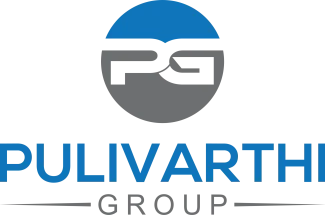The landscape of home health care services is undergoing significant transformations, particularly in the realm of malpractice claims. As of 2025, the United States has witnessed a concerning surge in claims against home health nursing professionals. This trend raises several critical questions: Why are malpractice claims on the rise? What implications does this have for nursing professionals, particularly those new to the field? How can home health care providers effectively mitigate these risks and ensure a safer environment for both patients and caregivers?
In this article, we will delve deeper into these questions, providing healthcare providers and nursing professionals with actionable insights into managing malpractice claims in home health settings. Understanding the factors contributing to these claims can enable home health agencies to refine their training programs and improve overall nursing competency.
Understanding the Surge in Malpractice Claims
The increase in malpractice claims within home health nursing stems from various factors, reflecting both systemic challenges and changing patient care dynamics. According to recent statistics, claims have risen by more than 30% in the past three years. Such an alarming rate points to underlying issues related to the complexities of home health care, where nurses often operate independently with varying levels of supervision.
Moreover, the increasing reliance on technology, telehealth consultations, and remote patient monitoring has transformed traditional caregiving, leading to new avenues for potential lawsuits. Additionally, with an aging population, nurses are frequently dealing with patients who have multiple comorbidities, which can complicate care and increase the risk of adverse outcomes.
Key Challenges in Home Health Nursing
Healthcare providers in home health settings face a range of challenges that can lead to higher malpractice claims:
- Inadequate Training: New nurses entering home health care often lack adequate training in specific skill sets. This gap can lead to errors in judgment and care delivery, increasing the potential for malpractice claims.
- High Turnover Rates: The nursing profession is notorious for high turnover rates, particularly in home health care. New team members may encounter different procedures and expectations, increasing the risk of mishaps.
- Isolated Work Environment: Home health nurses often work independently, which can reduce access to immediate support and guidance. This isolation can contribute to decision-making that may result in patient harm.
- Documentation Challenges: Accurate and timely documentation remains essential in home health care. Inconsistent or unclear documentation can be detrimental in a legal context, potentially turning a standard case into a serious malpractice claim.
The Importance of Comprehensive Training Programs
In light of these challenges, it is crucial for home health agencies to expand training programs for home health nurses. Comprehensive training should focus on equipping nurses not just with clinical skills, but also with essential competencies such as legal and ethical considerations, effective communication, and crisis management. By instilling these competencies, agencies can cultivate a workforce that is resilient against the pressures of the field.
Training programs can include:
- Simulation-based Learning: Implement scenarios where nurses can practice real-life situations in a controlled environment. This approach enhances problem-solving skills and helps build confidence.
- Ongoing Education: Facilitate continuous education that keeps nurses updated on the latest legal updates, guidelines, and best practices in home health care.
- Mentorship Programs: Pair seasoned nurses with new recruits for mentorship. This pairing can help address knowledge gaps and provide support when navigating complex situations.
Strategies for Risk Management
To reduce the incidence of malpractice claims, home health agencies should adopt effective risk management strategies:
- Implement Clear Protocols: Establish and regularly update protocols regarding patient care and treatment options. Having a standardized approach can minimize mistakes.
- Enhance Communication: Encourage open lines of communication between nurses, patients, and their families. Effective communication fosters better relationships and can assist in early identification of potential issues.
- Invest in Technology: Utilize technology for better documentation and patient monitoring. Digital tools can automate record-keeping and reduce the likelihood of errors.
- Conduct Regular Audits: Periodically review cases and documentation practices to identify recurring issues and areas of improvement. Audits can provide valuable insights into potential risks.
Addressing the Needs of New Nurses
New nurses in home health care face unique challenges that can predispose them to malpractice claims. A proactive approach to address their needs is essential:
- Structured Onboarding Process: Develop a clear onboarding program that sets expectations and provides comprehensive training on specific duties and responsibilities.
- Support Networks: Establish a network of support among peers and supervisors, allowing less experienced nurses to seek guidance readily without fear of repercussion.
- Emphasize Professional Development: Encourage new nurses to pursue certifications and specialized training. Investing in professional development enhances their confidence and skills.
Utilizing Data to Drive Improvement
Data collection and analysis play a vital role in identifying trends and refining risk management strategies. Agencies should track the following:
- Claim Patterns: Analyze databases to understand trends related to malpractice claims based on specific patient demographics or types of care provided.
- Incident Reporting: Encourage employees to report near misses and incidents within a no-punishment environment. Understanding “why” something happened is just as crucial as understanding “what” happened.
- Feedback Mechanisms: Implement channels where nurses can provide feedback on policies and procedures to foster a culture of continuous improvement.
Conclusion
The rise in malpractice claims in the field of home health nursing is a pressing issue that requires immediate attention and proactive measures by healthcare providers. By understanding the factors contributing to these claims, home health agencies can refine training programs, enhance risk management strategies, and ultimately create a safer environment for patients and caregivers alike.
Now more than ever, the focus should be on investing in training initiatives that elevate nursing competency and empower health care professionals. As a leader in staffing solutions, the Pulivarthi Group is committed to enhancing the capabilities of home health nursing through robust training and support systems, ultimately driving down the incidence of malpractice claims. Together, we can work towards a safer and more effective home care environment for all.
















